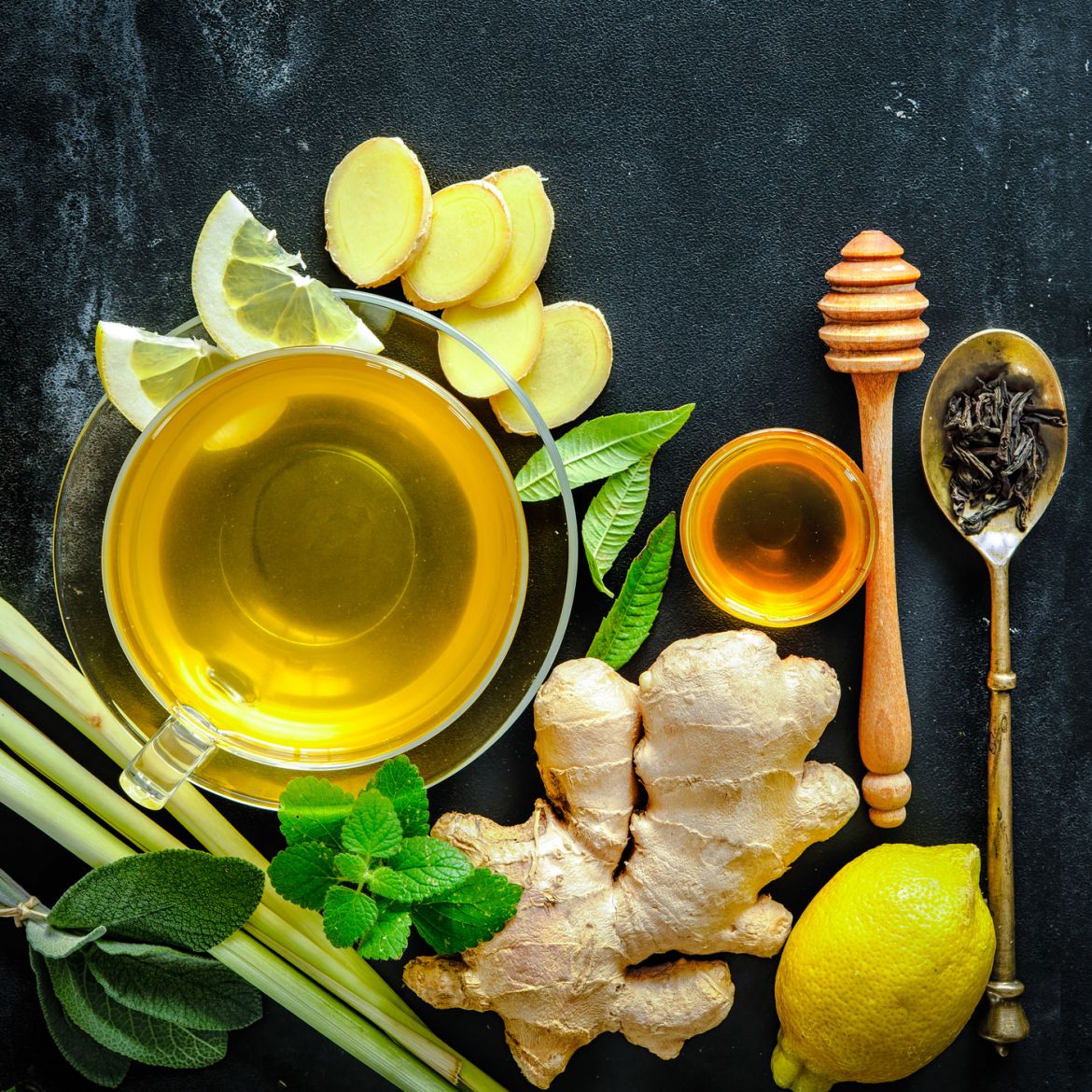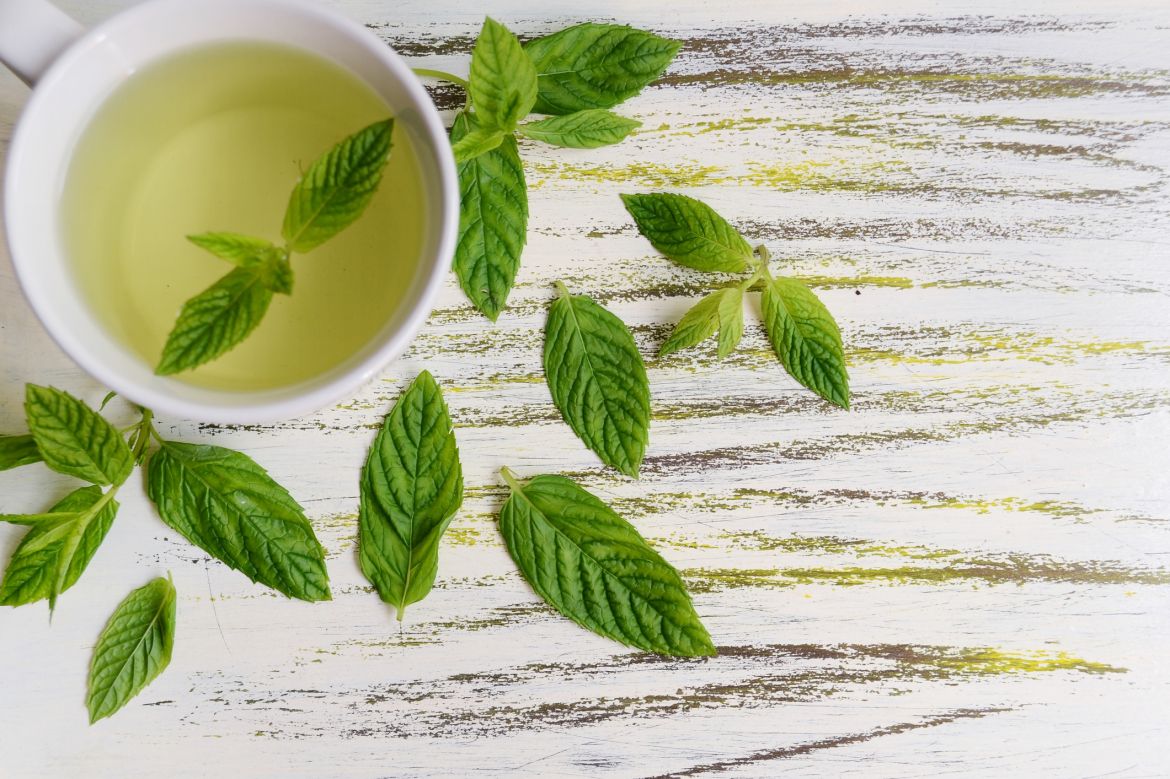Healthy Herbals for a New Year

The use of herbs for health and well-being has been around for centuries. May it be following the Indian approach with their practise of Ayurveda, or the traditional herbalist closer to home.
We all talk about herbal teas but in fact, a herbal infusion or tisane as the French call it, is not classified as true tea. Tea, containing caffeine is only harvested and produced from the camelia plant and its main varieties camelia sinensis and camelia assamica, whereas herbs are naturally caffeine-free and interact with the human body in different ways.The similarity between traditional tea and tisanes comes in the preparation. Both are mostly prepared from dried ingredients and infused with hot water, steeped for a certain amount of time before being enjoyed and sipped as a tasteful drink.
To create a herbal infusion you can use different parts of plants such as leaves, flowers, seeds, fruits, bark or roots. Sometimes only a single ingredient is used like camomile blossoms or peppermint leaves. Much more common however, are herbal blends and there is almost no limit to creativity by blending different herbs and fruits together.
Herbalists and people involved in a balanced lifestyle approach tell us that herbal teas have numerous benefits including:
The balance of the body and its organ functions, uplifting and energizing, relaxing and calming, soothing of the digestive system, strengthening of the immune system, better sleep patterns and therefore a more refreshed body and mind, and of course due to providing perfect hydration, herbal teas have good de-toxifying properties.
The preparation of herbal teasJust like with traditional teas, the quality of ingredients will influence the final taste in the cup. To create a lovely cup of herbal infusion start with the best ingredients you can possibly find and afford. High quality herbal teas are produced from the tender parts of a plant like leaves, flowers, bark and roots and need a generally longer time to infuse compared to traditional green and black teas.
To Infuse your Herbal Tea
• Boil water in a conventional kettle. Pour the boiling water over the herbs. For every cup/mug of water take one heaped teaspoonful of dried herbs.
• Cover the pot or mug and allow the infusion to brew for 5 to 10 minutes. Strain the tea and serve the infusion hot.
• You may add lemon or honey for flavour.
General tips for a perfect cup of tisane
• Rinse the kettle and the serving cups with warm water and keep them ready for tea. This will keep the prepared tea warm for a longer time.
• Do not over-brew the herbs, as it may make their taste bitter. If you want a stronger infusion, use more ingredients.
• Using our brewing accessories you can make either your own tea bags by adding the ingredients into paper filters, or a tea ball, strainer or infuser.
• Tisanes are not just a soothing drink in the winter for warming but also on a hot summer’s day as iced herbal tea. For iced recipes you need to prepare a stronger brew because the melting ice will increase the water content. Use at least double the amount of herbs per cup/mug for iced tea.
Cup of Tea offers a vast range of traditional teas from around the world but equally many herbal and fruit teas to tickle your palate and create a sense of well-being for your body.
A number of people prefer single herbal and fruit infusions such as camomile, peppermint, ginger, lemon grass, hibiscus and rosehip, however it is often the blends produced with real skill that provide a more exciting taste experience.
Camomile is one of the most popular single herbal infusions and known for its natural calming and soothing properties. The tisane is made from the flowers and can aid sleep patterns when drunk at the end f the day or before bedtime. Many people like to enjoy camomile tea after a meal as it will aid digestion. As a more medicinal remedy it will provide relief if a cold is bothering you or you need to tackle inflammation of the mouth.
If you can use loose camomile flower heads, infuse a well heaped teaspoon of blossoms per cup/mug for about 5 minutes. It has a sweet, pleasant and delicate taste. Cooled tea bags can be used for relieving skin irritation and inflammation.
Peppermint we believe must be the most popular single herb infusion of all. Praised for its marvellous aroma and cooling effect, peppermint has been used for centuries to refresh and soothe the body and the digestive system in particular.
The key ingredient in peppermint leaves is menthol—an essential oil that helps to ease headaches and calm the stomach. Peppermint tea is an overall calming and soothing drink and the actual peppermint herb comes in different varieties. Cup of Tea offers plain peppermint in loose leaf and tea bags, peppermint blended with a hint of lemon grass and also Nana or Moroccan Mint which is slightly spicy.
Ginger is seen by many as one of the root tisanes to keep the human body in balance and perfect health. Ginger infusion is rich in phytonutrients and antioxidants. It is said and research shows that is can have anti-cancer, anti-inflammatory and immune stimulating properties.
Ginger tea is another great ingredient to remedy stomach and digestive challenges but first and foremost, ginger infused tastes amazing and gives a hint of spice to any herbal blend.
Often used in combination with lemon grass in a large number of herbal and even traditional tea blends –Ginger and Lemon – is a marvellous combination and will waken your taste buds. Any ginger and lemon tea blend might benefit from a little added honey for even more soothing properties.
Lemongrass is another tisane that has been research for cancer fighting compounds. It is certainly proven that the herb detoxifies the body and improves skin health. This tea increases the frequency of water release from the body and avoids the retention of it in the body system.

Despite the medical benefits lemon grass on its own has a wonderful aroma and will just generally uplift your spirit. A cup of this tisane before bedtime can ensure sound sleep.
Cup of Tea offers a number of Ginger and Lemon blends such as Rooibos Ginger and Lemon, Ginger and Lemon herbal infusion and Green Tea with Ginger and Lemon.Having mentioned rooibos just above, this herb is largely grown in South Africa and has been praised for its antioxidant properties. It is high in vitamin C as well as other minerals. It can be enjoyed by any age group and has become particular popular with expecting women as a tasteful naturally caffeine-free option to traditional tea.
Rooibos is found in many of Cup of Tea’s Wellness Blends such as Best Balance and Fell Relaxed.
Many herbal blends contain cinnamon classified as a bark tisane. Cinnamon adds a warming fragrance to any herbal tea blend and supports the general metabolism function in the human body. It is also said that cinnamon might strengthen the immune system which is particularly important during the winter months.Whether you may drink a cup of herbal tea for a specific purpose or just as a lovely warming and comforting alternative to other hot drinks, any herbal infusion creates a feeling of well being one way or another at any time of the day. It also provides a tasty, caffeine-free pick-me-up way of hydration. From soothing a troubled tummy to aiding better sleep or calming a troubled mind, herbs have all sorts of healing powers. Drinking herbal tea can also be a great source of vitamins and minerals.
- 9th January 2019












 EARN POINTS WITH OUR LOYALTY SCHEME
EARN POINTS WITH OUR LOYALTY SCHEME